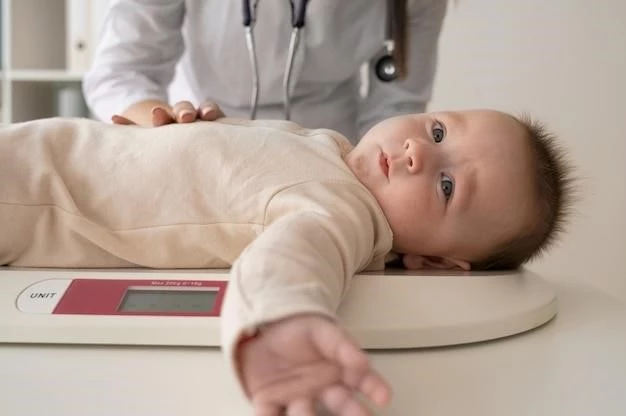Article Plan⁚ Disease ー Sudden Infant Death Syndrome

Definition and Overview

The sudden infant death syndrome (SIDS) refers to the unexplained death of an infant under one year of age, usually occurring during sleep. It is a tragic event that continues to puzzle medical professionals. SIDS is particularly devastating as it occurs unexpectedly, leaving families and caregivers with profound grief and confusion.
SIDS is often referred to as crib death, emphasizing the uncertainty surrounding its cause. The phenomenon typically affects infants between one month and one year old, with a higher incidence between two to four months. Despite extensive investigations, no definite cause is identified, making prevention challenging.
For parents and caregivers, understanding the risk factors associated with SIDS and implementing safe sleep practices are critical in mitigating the likelihood of such a tragedy. Through education, awareness, and adherence to recommended guidelines, the risk of SIDS can be reduced, providing a safer sleep environment for infants.
Risk Factors and Causes
Sudden infant death syndrome (SIDS) is a complex phenomenon with unidentified definitive causes, making prevention challenging. Various risk factors are associated with SIDS, such as sleeping position, prenatal exposure to tobacco smoke, overheating, and more. Understanding these risk factors is crucial in reducing the likelihood of SIDS occurrence.
While the exact causes of SIDS remain unknown, research suggests that abnormalities in regions of the brain controlling breathing and arousal from sleep may play a role. Additionally, factors like respiratory infections, prematurity, and low birth weight can contribute to the risk of SIDS. It is essential for caregivers to prioritize safe sleep environments and practices to protect infants.
By recognizing and addressing the risk factors linked to SIDS, parents and caregivers can create a safer sleep environment for infants. Consult healthcare professionals for guidance on reducing SIDS risks and promoting safe sleep practices to ensure the well-being of the child.
Prevention Strategies
Preventing sudden infant death syndrome (SIDS) involves implementing safe sleep practices and reducing known risk factors. Ensure that infants sleep on their backs on a firm mattress in a separate sleep area, free from pillows, soft bedding, toys, or loose blankets that could obstruct breathing.
Keep the sleep environment at a comfortable temperature to prevent overheating. Avoid smoking during pregnancy and after birth, as exposure to smoke increases the risk of SIDS. Breastfeeding and routine immunizations also play a role in reducing the incidence of SIDS.
Regular prenatal care, creating a smoke-free environment, and having infants share a room (but not a bed) with parents for the first six months can contribute to a safer sleep environment. Monitoring infants during sleep and using pacifiers at naptime and bedtime have also been suggested as preventive measures against SIDS.
Diagnosis and Investigation
Diagnosing sudden infant death syndrome (SIDS) involves a comprehensive investigation that includes a thorough autopsy, examination of the death scene, and analysis of the clinical history. It requires ruling out other known causes of infant death, making the process challenging for healthcare providers.
The investigation aims to determine if the infant’s death remains unexplained after meticulous scrutiny. Autopsies play a crucial role in understanding any underlying anomalies or factors that might contribute to SIDS. Despite advancements in medical technology, the exact cause of SIDS often remains elusive, emphasizing the need for continued research and awareness.
If you suspect your infant’s death was due to SIDS, it is essential to cooperate fully with medical professionals during the investigation process. Understanding the diagnostic procedures and potential limitations can help families navigate this difficult time with support and appropriate guidance.
Statistics and Trends
Sudden infant death syndrome (SIDS) remains a significant concern globally, with about 4٫000 sleep-related infant deaths occurring each year in the US. However٫ efforts by organizations like the American SIDS Institute have led to a decline in the SIDS rate. Despite this progress٫ SIDS continues to be one of the leading causes of death in infants between one to twelve months of age in the United States.
The risk of SIDS is highest between the ages of one to four months, highlighting the importance of early prevention strategies and safe sleep practices. While the exact cause of SIDS remains unknown, ongoing research and education initiatives aim to uncover more insights to further reduce the incidence of this tragic phenomenon.
By understanding the causes, risk factors, and following recommended guidelines, parents and caregivers can play a crucial role in lowering the risk of SIDS and creating a safer sleep environment for infants. Stay informed, engage with relevant organizations, and prioritize safe sleep practices to contribute to the ongoing efforts to combat SIDS.
Research and Studies
Researchers and organizations worldwide are dedicated to investigating and understanding sudden infant death syndrome (SIDS) to prevent these tragic occurrences. Ongoing studies focus on identifying potential risk factors, genetic predispositions, and environmental influences that may contribute to SIDS.
Research efforts aim to shed light on the underlying mechanisms of SIDS, such as abnormalities in respiratory control, brain development, and cardiac function. By delving into these areas, scientists strive to develop effective preventive strategies and interventions to reduce the incidence of SIDS.
Participating in research studies and staying informed about the latest findings can help caregivers and healthcare professionals implement evidence-based practices to safeguard infants. Collaborating with researchers and supporting studies on SIDS is crucial in advancing knowledge and improving outcomes for vulnerable infants.
Support and Resources
Following the loss of an infant to sudden infant death syndrome (SIDS), families may find solace and guidance through various support services and resources. Organizations like the American SIDS Institute offer a wealth of information, support networks, and assistance to help families navigate their grief and seek answers.
Support groups, online forums, and bereavement counseling can provide emotional support during this challenging time. Connecting with other families who have experienced similar losses can offer comfort and understanding. Additionally, healthcare professionals and mental health providers can offer guidance on coping strategies and emotional healing.
Accessing resources that focus on grief support, mental health services, and memorializing the lost infant can aid families in the grieving process. Remember, reaching out for help is a sign of strength, and there are valuable resources available to support families affected by SIDS.
Safe Sleep Practices
Implementing safe sleep practices is crucial to reduce the risk of sudden infant death syndrome (SIDS). Placing infants on their backs to sleep on a firm mattress without pillows, soft bedding, or toys can create a safe sleep environment. Avoiding overheating and ensuring a smoke-free setting are essential precautions.
Monitoring the room temperature to prevent overheating and having infants share a room with but not a bed with parents for the first six months can enhance safety. Utilizing pacifiers at naptime and bedtime has been linked to reducing SIDS risk. Following these guidelines diligently can help protect infants during sleep.
By adhering to safe sleep practices, parents and caregivers can significantly lower the risk of SIDS and provide a secure sleeping environment for their babies. Educate yourself on safe sleep recommendations and create a safe sleep routine to safeguard your infant’s well-being.
Impact on Families
The impact of sudden infant death syndrome (SIDS) on families is profound and enduring, causing unimaginable grief. Families grappling with the loss of a baby to SIDS often face emotional turmoil, confusion, and a sense of overwhelming loss. The unexpected nature of SIDS can leave parents and caregivers struggling to come to terms with the tragedy.
The emotional toll of losing a child to SIDS can lead to feelings of guilt, sadness, and isolation. Parents may experience ongoing anxiety and fear, particularly if they have other children. The impact extends beyond the immediate family to relatives, friends, and the community, all affected by the loss.
Seeking support from counseling services, support groups, and mental health professionals can help families navigate the complex emotions associated with SIDS. It’s essential for families to communicate openly, lean on their support network, and engage in self-care practices during this challenging time.
Awareness and Education Efforts
Increasing awareness and educating the public about sudden infant death syndrome (SIDS) are crucial in reducing its incidence and providing support to affected families. Organizations like the American SIDS Institute focus on education campaigns, resources, and research to raise awareness about SIDS risk factors and prevention strategies.
By promoting safe sleep practices, educating caregivers on SIDS risk reduction techniques, and sharing information on the latest research findings, awareness efforts can empower families to create a secure sleep environment for infants. It is essential to stay informed, engage in educational initiatives, and spread knowledge about SIDS within communities.
Participating in educational programs, attending workshops, and accessing online resources can equip parents and caregivers with the necessary knowledge to protect infants from SIDS. By working together to enhance awareness and education surrounding SIDS, we can strive towards a future where such tragedies are minimized, and families receive the support they need.
